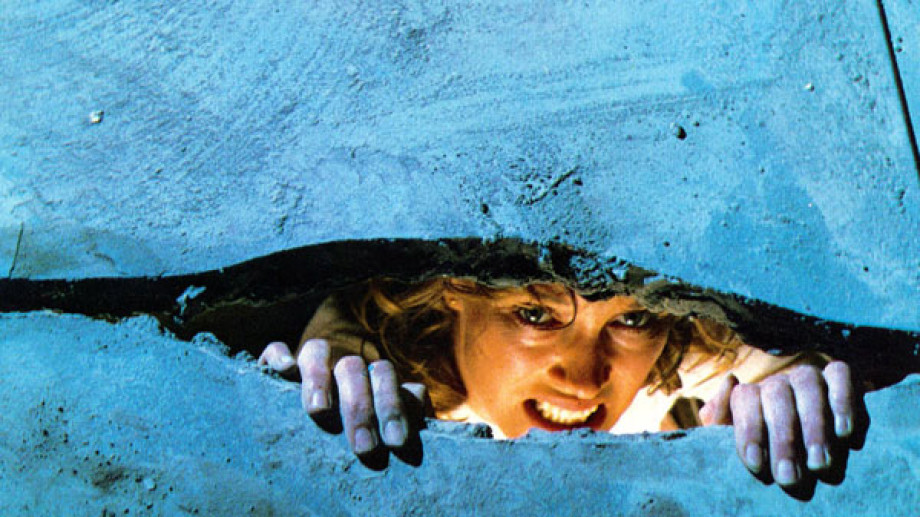
Few directors in the history of cinema have put maggots, guts, and gouged eyeballs to as great use as Italian horror maestro Lucio Fulci. The filmmaker’s talents extend far beyond his admirable use of gore, however. Fulci is a master of mood, creating some of the most haunting and surreal worlds in the horror genre. Among the greatest examples of this is his 1981 supernatural splatter flick The House by the Cemetery, which screens this Friday in its original, uncut form (it was heavily censored upon it initial release) as part of our no-holds-barred Midnight Movies series.
The film tells the story of the Boyles, a loving family of three who move from New York City to just outside of Boston. Unfortunately for the Boyles, their new house is also home to a monstrous killer who is in dire need of fresh body parts to keep himself alive. But as is the case with many Fulci films, plot is of little real importance. The movie’s strengths are its nightmarish atmosphere and particularly grisly special effects.
The House by the Cemetery, along with Fulci's films The Beyond and City of the Living Dead, is considered part of the director’s unofficial Gates of Hell trilogy. These films are not only similar in the thematic sense—each includes some sort of passageway to unfathomable terror, hence the trilogy's title—but stylistically, as well. Fulci manages to develop highly eerie, dreamlike moods through his use of sound, lighting, and set design that exceed his reputation as a b-movie hack and purveyor of purely low art . The movies' wretched dubbing and often nonsensical sequences of events may lead some to doubt the director's talent, when in truth these aspects only heighten the fantastic surreality of the films.

Unfortunately, Fulci has not enjoyed the widespread acclaim enjoyed by fellow horror auteurs such as George Romero and Dario Argento, perhaps due in part to his extreme and often nauseating special effects—a shame since they are truly part of his brilliance. At his best, Fulci quite artistically creates a growing sense of dread that eventually explodes in shocking bouts of gory violence, revealing a dedication to both style and genre sets him apart from the legions of lesser purveyors of ick.
The House by the Cemetery is not Fulci’s most violent film, although it does include its fair share of impaling, throat-ripping, and decapitations. A master of exploitation, the director knew how to get people into the theater. The House by the Cemetery therefore offers two forms of immediate, visceral entertainment. First is the adrenaline rush brought on by the characters’ sluggishness and stupidity in the face of danger. Few films make you want to stand up and scream “Run!” like this one. Second is the undeniable pleasure of watching the very bloody results when those characters fail to get out of the way.
For those with an appreciation for eyeball-piecing fun, The House by the Cemetery is not be missed. And what better way to see it then in its original, uncut version on a rare 35mm print? Join us this Friday at midnight to bear witness to one of Lucio Fulci’s greatest works of art in all its gruesome glory.



